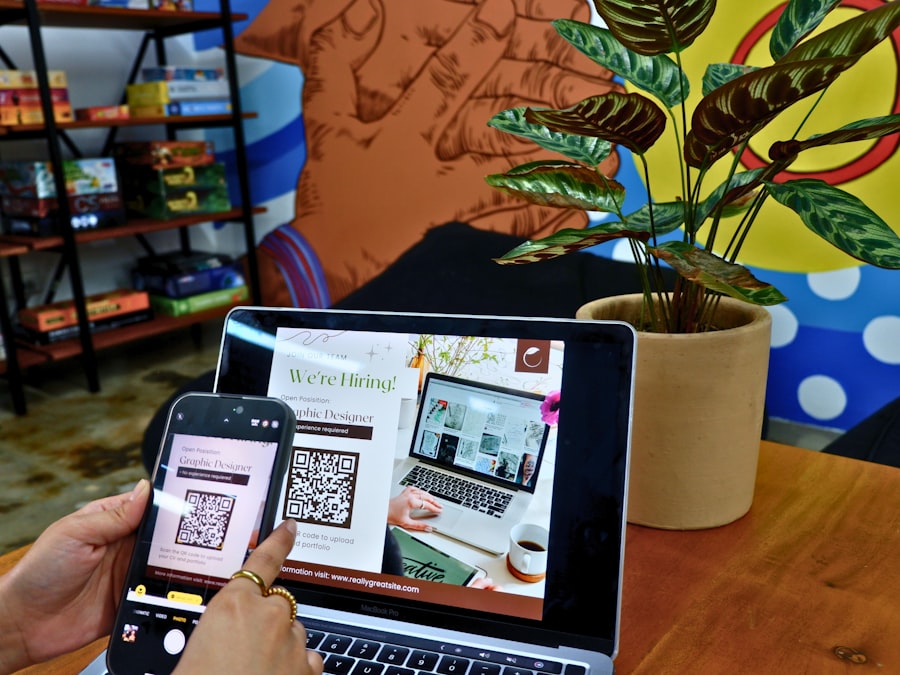In the realm of business networking, retention is a critical factor that can significantly influence the overall success and sustainability of a networking group. Retaining members is not merely about keeping numbers up; it reflects the value that the group provides to its participants. When members feel a sense of belonging and see tangible benefits from their involvement, they are more likely to remain engaged and contribute actively.
This creates a positive feedback loop where the collective knowledge and resources of the group grow, leading to enhanced opportunities for collaboration and referrals. Moreover, high retention rates can enhance the group’s reputation, attracting new members who are eager to join a thriving community. Furthermore, understanding the dynamics of member retention involves recognizing the diverse motivations that drive individuals to join networking groups in the first place.
Some may seek to expand their professional connections, while others might be looking for mentorship or industry insights. By acknowledging these varied motivations, facilitators can tailor their approaches to meet the specific needs of their members. This not only fosters loyalty but also encourages members to take an active role in shaping the group’s direction.
Ultimately, a focus on retention cultivates a vibrant ecosystem where members feel valued and empowered, leading to sustained growth and success for both individuals and the group as a whole.
Key Takeaways
- Networking group retention is crucial for long-term success and growth
- Effective business development strategies are essential for attracting and retaining members
- Building strong relationships with members is key to creating a sense of community and loyalty
- Providing value and benefits to members is essential for keeping them engaged and satisfied
- Creating engaging and relevant events and activities is important for member participation and retention
- Leveraging technology for communication and engagement can enhance member experience and retention
- Measuring and evaluating success and making adjustments is necessary for continuous improvement and member retention
Implementing Effective Business Development Strategies
To harness the full potential of a networking group, it is essential to implement effective business development strategies that align with the goals of both the group and its members. One key approach is to establish clear objectives that guide the group’s activities and initiatives. These objectives should be communicated transparently to all members, ensuring that everyone understands how their participation contributes to the collective mission.
By setting measurable goals, such as increasing referral rates or expanding member businesses, facilitators can create a focused environment that encourages collaboration and accountability. In addition to setting objectives, it is crucial to regularly assess and refine business development strategies based on feedback from members. This iterative process allows facilitators to identify what works well and what may need adjustment.
For instance, if certain networking events consistently yield high engagement and referrals, those formats can be replicated or expanded upon. Conversely, if specific initiatives fail to resonate with members, it may be time to pivot or explore new avenues. By fostering an adaptive mindset within the group, facilitators can ensure that business development efforts remain relevant and impactful, ultimately driving growth for all involved.
Building Strong Relationships with Members

At the heart of any successful networking group lies the strength of its relationships among members. Building strong connections requires intentional effort and a genuine commitment to fostering a supportive environment. Facilitators play a pivotal role in this process by encouraging open communication and creating opportunities for members to interact on a personal level.
This could involve icebreaker activities during meetings or informal gatherings that allow members to share their stories and experiences. When individuals feel comfortable sharing their challenges and successes, it paves the way for deeper connections that can lead to fruitful collaborations. Moreover, nurturing relationships within the group extends beyond initial introductions; it involves ongoing engagement and support.
Facilitators can implement mentorship programs or buddy systems that pair experienced members with newcomers, fostering a sense of community and belonging. Additionally, recognizing individual achievements and milestones can further strengthen bonds among members. Celebrating successes—whether it’s a business milestone or a personal accomplishment—creates an atmosphere of encouragement and positivity.
Ultimately, when members feel valued and connected, they are more likely to invest their time and resources into the group, leading to enhanced collaboration and mutual growth.
Providing Value and Benefits to Members
The foundation of any successful networking group is its ability to provide tangible value and benefits to its members. This value proposition should be clearly articulated and consistently delivered through various channels. Members join networking groups with specific expectations—whether it’s access to new business opportunities, educational resources, or industry insights—and it is essential for facilitators to meet these expectations effectively.
Regularly soliciting feedback from members can help identify areas where additional value can be provided, whether through workshops, guest speakers, or access to exclusive resources. In addition to educational offerings, creating opportunities for members to showcase their expertise can significantly enhance perceived value. This could involve hosting member spotlights during meetings where individuals share their skills or success stories, thereby positioning them as thought leaders within the group.
Furthermore, facilitating referral exchanges among members can lead to immediate business opportunities, reinforcing the practical benefits of membership. By continuously striving to enhance the value proposition, facilitators can ensure that members remain engaged and motivated to contribute actively to the group’s success.
Creating Engaging and Relevant Events and Activities
Events and activities serve as the lifeblood of networking groups, providing essential touchpoints for member interaction and engagement. To maximize participation and enthusiasm, it is crucial for facilitators to design events that are not only engaging but also relevant to the interests and needs of the members. This requires a deep understanding of the group’s demographics and industry trends.
For instance, hosting workshops on emerging technologies or industry best practices can attract participation from members eager to stay ahead in their fields. Additionally, incorporating interactive elements such as panel discussions or roundtable sessions can foster dynamic conversations that encourage collaboration. Moreover, variety in event formats can keep members excited about upcoming gatherings.
While regular meetings are important for consistency, introducing unique experiences—such as networking retreats or themed social events—can break the monotony and spark creativity within the group. Facilitators should also consider leveraging member expertise by inviting them to lead sessions or share their insights on specific topics. This not only empowers members but also reinforces a sense of ownership within the group.
By curating a diverse calendar of events that cater to different interests and preferences, facilitators can create an environment where members feel inspired to participate actively.
Leveraging Technology for Communication and Engagement

In today’s digital age, leveraging technology is essential for enhancing communication and engagement within networking groups. Online platforms can facilitate seamless interactions among members, allowing them to connect beyond physical meetings. Utilizing tools such as dedicated forums or social media groups enables members to share resources, ask questions, and collaborate on projects in real-time.
This virtual connectivity fosters a sense of community that extends beyond scheduled events, ensuring that members remain engaged even when they cannot meet face-to-face. Additionally, technology can play a pivotal role in streamlining administrative tasks associated with managing a networking group. From scheduling meetings to tracking member participation and referrals, various software solutions can simplify these processes, allowing facilitators to focus on creating meaningful experiences for their members.
Furthermore, incorporating virtual events into the group’s offerings can expand accessibility for those who may have geographical constraints or scheduling conflicts. By embracing technology as a tool for communication and engagement, facilitators can create a more inclusive environment that caters to diverse member needs.
Measuring and Evaluating Success and Making Adjustments
To ensure continuous improvement within a networking group, it is vital to establish metrics for measuring success and evaluating outcomes regularly. This involves defining key performance indicators (KPIs) that align with the group’s objectives—such as member retention rates, referral generation statistics, or event attendance figures. By collecting data on these metrics over time, facilitators can gain valuable insights into what aspects of the group are thriving and which areas may require adjustments.
Moreover, fostering a culture of feedback among members is essential for ongoing evaluation. Regularly soliciting input through surveys or informal discussions allows facilitators to gauge member satisfaction and identify potential areas for enhancement. When members feel heard and see their suggestions implemented, it reinforces their commitment to the group’s success.
Additionally, being open to making adjustments based on feedback demonstrates adaptability—a crucial trait for any successful networking group in an ever-evolving business landscape. By prioritizing measurement and evaluation as integral components of group management, facilitators can ensure that their networking community remains dynamic, relevant, and beneficial for all involved.
For those interested in enhancing their networking group retention through business development strategies, a related article worth exploring is “Mastering the Art of Networking: Tips for Success.” This insightful piece offers practical advice and strategies to improve your networking skills, which can directly impact the effectiveness and longevity of your networking group. You can read more about these valuable tips by visiting Mastering the Art of Networking: Tips for Success. This article is a great resource for anyone looking to strengthen their professional connections and ensure their networking group remains vibrant and engaged.
FAQs
What is business development?
Business development is the process of identifying opportunities for growth within a company and implementing strategies to take advantage of those opportunities. This can include activities such as sales, marketing, partnerships, and networking.
What is a networking group?
A networking group is a collection of individuals or businesses who come together to share information, contacts, and resources in order to help each other grow their businesses or careers.
How can business development enhance networking group retention?
By utilizing business development strategies, such as creating valuable partnerships, providing educational resources, and offering networking opportunities, a networking group can increase the value it provides to its members, leading to higher retention rates.
What are some business development strategies that can be used to enhance networking group retention?
Some business development strategies that can enhance networking group retention include creating targeted marketing campaigns, organizing industry-specific events, offering member discounts on products or services, and providing valuable educational content.
Why is networking group retention important for business development?
Networking group retention is important for business development because it allows the group to maintain a strong and engaged membership base, which can lead to increased opportunities for collaboration, referrals, and business growth for its members.





